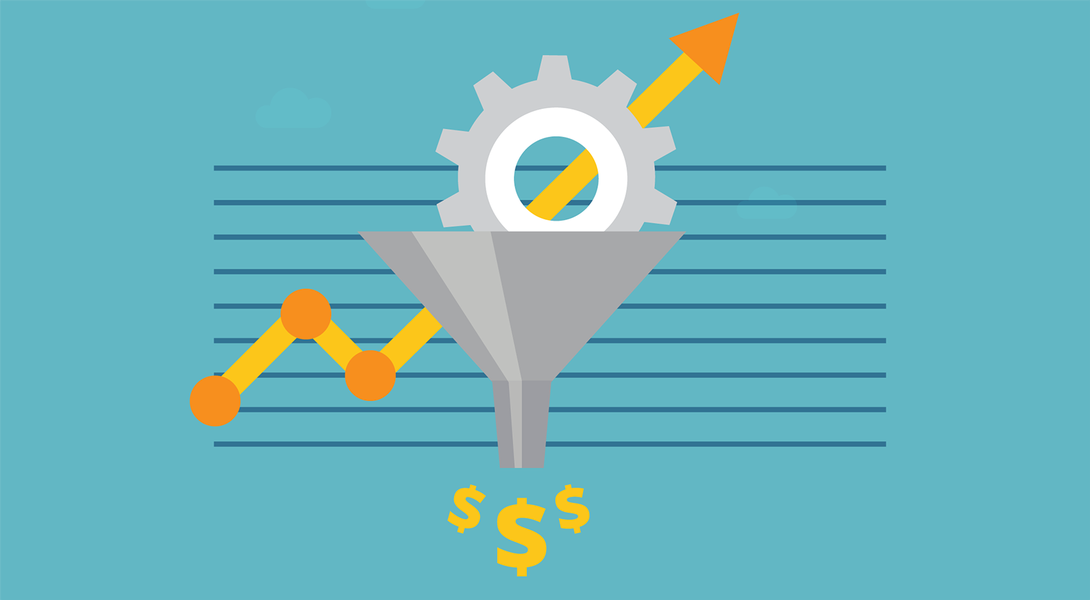Conversion rate optimization is often considered the holy grail of eCommerce. Regardless of how you define “conversion” (eCommerce store sale? Or maybe email capture?), they’re generally indicative of higher customer engagement with your site and a better experience overall. And while conversions don’t always correlate with increased sales, it stands to reason that more conversions today equals more downstream revenue tomorrow.
But your conversion rate is a broad metric easily affected by many different issues, from your website to your marketing to your shopping cart experience. Let’s review six of the biggest offenders here.
1. Poor Navigation & Search
Consumers expect a quick, straightforward, and intuitive shopping process that lays everything out in plain sight. Anticipating the browsing and search habits of your target audience is always a challenge, and if done incorrectly, can risk alienating would-be customers.
Poor navigation can have a detrimental impact on your website’s ability to convert sales, so pay attention to search features and whether website visitors can quickly categorize items to pull up the right results.
Are your best-selling items easy to find? Can users browse your catalog easily? Metrics like bounce rate or time spent on-page can help you determine how far users make it before leaving—and which web pages are driving them away.
What you need from your platform:
- The ability to quickly reorganize, categorize and merchandise products
- Control over search filters and options
- Integration with an analytics platform – is search data being passed into your analytics tools?
2. Incomplete Order Summaries
This one might seem like a no-brainer for eCommerce retailers, but each order needs to be supported with comprehensive details about product availability, shipping fees, available discounts, and any other transaction costs.
We’ve seen a worrying trend where retailers hold back details about shipping and taxes until the very last stages of order confirmation. In reality, they should be upfront about all costs from the get-go to prevent sticker shock at the confirmation page. Research suggests that 25% of your customers will abandon their carts after encountering unexpected shipping costs, so make sure you’re giving customers the information they need. It’s not just about transparency—it’s about creating a user experience your customers can trust.
What you need from your platform:
- Flexibility over the layout and checkout experience
- The ability to leverage customer information early in the checkout process to remove and reduce steps within the checkout flow.
3. The (Missing) Mobile Experience
Mobile is big. Everyone knows it. It’s growing so fast that it’s expected to encompass a full 72.9% of all eCommerce by 2021. Naturally, if your conversion rates are low, the mobile factor is a good area to examine.
In our experience, most of these missed conversion opportunities come from eCommerce retailers who think they can get by with unresponsive web design that looks okay but doesn’t translate well to the mobile shopping experience. Layout dimensions may get warped, the page may be sluggish, or desktop-specific opt-ins may get lost in the shuffle. Use Google Analytics to monitor how much of your traffic comes from mobile and work to create a better experience across all your channels.
What you need from your platform:
- The ability to track where orders originate and where they’re completed – are customers shopping from both the mobile and desktop versions of your site? Are the conversion rates different between the two?
- The ability to alter checkout screens to reduce friction points and unnecessary obstacles such as clunky forms and popup windows.
4. Bad SEO
SEO isn’t just about ranking high in search results. It’s about relevancy. Google responds to search queries by presenting the most helpful and authoritative pages it has indexed relative to the keywords searched, and if your page doesn’t have an effective keyword strategy, you might be appearing to users who have little interest in your store.
High bounce rates on your home page or landing pages are a key warning sign that this may be the case. If it’s been a while since you’ve refreshed your keyword strategy, tools like Google Keyword Planner can help you understand how to make your SEO more relevant to your target market.
What you need from your platform:
- The ability to control the layout of each product detail page to make it as keyword-rich as possible, and link from it to relevant product listing pages.
- Similarly, on the product listing pages, control over the layout and display ensures that each of the listing page URLs is search engine-friendly and built with SEO in mind.
5. Asking for Too Much
Your checkout process has one goal: giving users the information they need to go through with their purchase. Its goal isn’t to snap up their personal information, and it’s not to get them signed up for your email lists. Nevertheless, plenty of retailers gatekeep their checkout process by asking users to fill in their personal details, email, phone number, address, and banking information.
Some of it is necessary—but bear in mind that every additional task you ask of them is one more reason for them to leave. Customers are naturally protective of their data (especially in our era of data theft), so don’t get pushy. The less time they spend filling out your form fields, the less likely it is that they’ll abandon their carts out of frustration.
What you need from your platform:
- The ability to customize the standard checkout is key – any time you’re restricted to “recommended” templates or structure, something is getting lost.
- The flexibility to carefully balance the number of data points you’re requiring against the time-to-checkout metric. The longer and more comprehensive the checkout process, the lower the conversion rate you’re going to see – especially on mobile.
- Implement post-order feedback and follow up loops via email to build a more complete customer profile after a successful order. The automated workflow engine in your eCommerce platform should make that process as painless as possible.
6. Marketing Program Integration
A known killer of conversion rates comes when newly-launched marketing programs don’t correlate with the customer experience on the website.
This mismatch between campaign and experience usually comes as a result of the marketing team wanting to quickly launch, test and iterate messaging and creative, while the web team struggles with the web platform to get the same marketing messaging live.
For example, we’ve all seen an ad on the web for a product or promotion only to click on the ad and feel like something broke. Maybe the product is nowhere to be found, or the promotion doesn’t work (or is missing altogether) when we get to our shopping cart. The result is a frustrated user.
What you need from your platform:
- The platform needs to include some form of content management system to make the process of creating and managing marketing messaging as seamless as possible.
- Beyond messaging, the marketing team should also be able to create and schedule promotions and product merchandising in a way that matches the existing product marketing strategy.
Conversion Optimization Is Website Optimization
There’s a lot that goes into the eCommerce experience, and any number of issues can trip you up. Improving your site’s conversion rates is a multi-faceted goal that requires you to take a hard look at your existing eCommerce experience, website, and shopping cart to see what issues are giving your customers pause. Using your eCommerce platform as a tool to help solve conversion challenges will help boost conversion rates, improve average order values, and boost customer satisfaction.
It can be a bit like looking for a needle in a haystack—but with regular, consistent effort, you can hammer out these issues and create a web experience that keeps your customers coming back.


